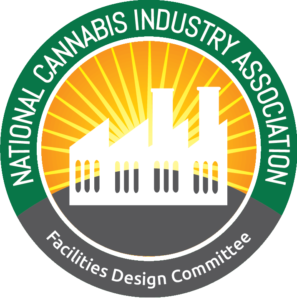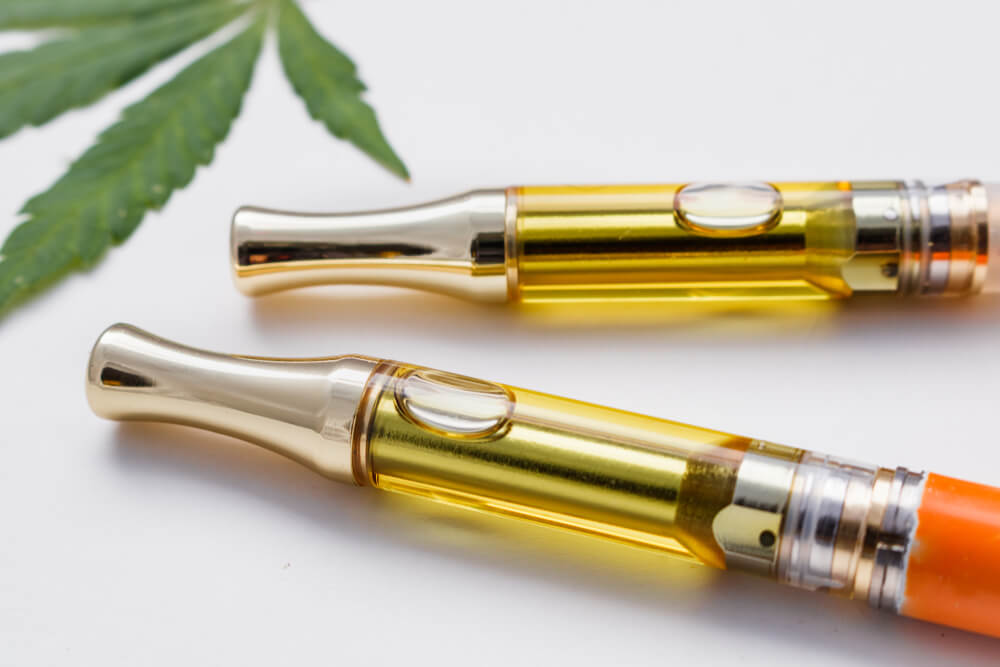 by members of NCIA’s Facilities Design Committee
by members of NCIA’s Facilities Design Committee
Jacques Santucci, Brian Anderson, David Vaillencourt, and David Dixon
Continuing our five-part series on the behind-the-scenes workings of the legal cannabis industry. This series focuses on all of the inner dealings and industry advice from established professionals to craft this unlimited How-to-Guide to assist you in setting up your own facility. These articles cover cultivation, extraction, infused products, and retail facilities as well as support activities. In general, remember to be compliant with all local rules and regulations and contact a licensed contractor and industry expert.
Part Three, Food: 10 Things to Consider When Planning Your Manufacturing of Infused Products (MIPs) Operations
Food safety and handling practices are an issue for any industry working with or processing products for human consumption and often come with strict guidelines that need to be followed. In the cannabis industry, edibles and other processed or infused products Manufactured Infused Products (MIPs) are ready-to-eat foods, so many states are regulating them as foods under the cGMP requirements of 21CFR117. We feel this is likely the approach that will be appropriate when cannabis becomes federally legal. These 10 things should be considered as you begin to plan your facility. Always remember to be compliant with all local rules and regulations.
Sanitary Design and Operation
A production room is straightforward, conceptually: design the space so walls, floors, and ceilings can be washed and sanitized, then verified (ATP swabs) to confirm the cleaning process is effective. To facilitate cleaning, everything needs to be pulled away from the walls, the ceiling needs to be solid and the walls need to be sealed. Insulated metal panels (IMP) are a cavity-free construction that is seeing wide acceptance in the industry. To keep the space clean during operation, slope the floors to spot drains, install coves along with the floor/wall interface and avoid ledges and traps for water or dust.
Employee Hand Washing
A stringent internal process for sanitation and washing of hands is crucial. Make sure that lavatories are available throughout your facility for proper sanitation. Confer with the municipal board of health for locations and quantity. Generally locate any place where employees are handling consumable products or encounter the potential for microbiological.
Boot Washing
Sanitation includes making sure all boots/shoes are free of contaminants. Employee captive corporate footwear programs prevent contamination potential from non-business-related employee activities.
Cart Washing
For carts that transport ingredients and materials, it is important to prevent floor debris getting transferred from one area to another. Two areas of concern; are wheels and cart shelves. Either wheel or shelf area can be addressed from multiple washing devices specific to each type of cart used.
Product Storage
Food safety temperature and humidity separation of products are an important factor. The purpose is to store food products at such a temperature and humidity level to prevent the growth of undesirable bacteria.
Allergen cross-contamination
Make sure to arrange products to avoid cross-contamination of open and unopened products. Keep the first pallet off the floor at a height of 6” AFF to avoid picking up contaminants. OHSA SHARP may apply how to organize products.
You can design barriers to keep contamination from entering a room.
Limit contamination by having and always renewing Personal Protective Equipment (PPE), since the adjacent hallways may transport raw biomass. Test all ingredients, including THC, to ensure that everything is microbiologically safe. Wipe down, or unpackage ingredients, materials, and supplies before bringing them into the ‘clean environment’ room. Wear specific scrub, clean boots, and wash off any carts entering the room.
Employees entering the food production space
Contaminants can enter via the employees. It is essential to have all employees and agents clean up before entering the food production space. You must provide facilities to wash and sanitize hands as well as boots. Continuous training of employees and monitoring adherence to the procedures is important. Your procedure will include how sanitation is necessary, where are smocks hung, how are shoes cleaned, etc. Typical controls are in the FDA Food Code for jewelry, open sores, illness, etc.
Food Safety Inherent in the Recipes
Complete a Food Safety Hazard Analysis to know if you need to implement an upstream preventative control, such as for chocolate, or if you need to manage a thermal kill-step such as cooking the gummies mass. Low water activity, high acid, or a natural biocide additive, can all be considered.
Control for Allergens
MIPS often contain soy, flour, eggs, dairy, peanuts, tree nuts, coconut, and perhaps others. Each has special considerations for allergen separations and allergen cleaning.
Ware Washing and Clean Parts Storage Room
Don’t Underestimate the Ware Washing and Clean Parts Storage Room. Adjacent to your MIPs production room, consider building a washroom with a commercial dishwasher for utensils, kettles, wetted parts, trays, molds, etc. You might install a three-compartment sink. And make sure to safely store clean items, so they dry and do not get recontaminated prior to use. This room is maintained at negative pressure to the MIPs production room.
Plan for the Pantry
Store ingredients, materials, and supplies in a pantry off the MIPs room can be considered. It is much easier to clean the MIPs room if such items are stored outside production. If you pre-weight, or decant in the pantry, cardboard and plastic are kept out of production. It is a great idea to provide a door also to the adjacent hallway to drop off ingredients, then your staff can enter from the MIPs room. Special care is taken when storing opened products.
Keeping Final Products Food-Safe
The best practice might be to put products such as chocolate bars into primary film envelopes or fin-seal gummies while still in the MIPs room. Often, subsequent packaging is done where there are other possible contaminants such as open bud, pre-rolls, chipboard or corrugated, etc. If the food products are already protected by primary packaging, you will greatly reduce the risk of recontamination.
HVAC, Humidity Control, and Filtration
HVAC, Humidity Control, and Filtration are critical. The MIP production room should be air-conditioned and filtered to at least MERV 14. Cook kettles may be a source of humidity that could be placed under a commercial hood. Cooling and tempering of chocolates and cooling and drying of gummies/jellies have their own special considerations. And consider provide enough HVAC capacity to dry out the production room after a heavy cleaning.
Airlocks and Room Pressurization
Airlocks and room pressurization should be planned properly based on your goals, budget and facility. The MIPs room pressure should be positive to all other adjacent rooms: washroom, pantry, extraction, corridors, lab. There are a wide variety of approaches to airlocks, from a pharma approach with air showers down, to just a door with sufficient air supply to the production room to ensure that it is always positive to the adjacent hallway.
Check Out These Related Articles for More Top Things to Consider When Planning:
Part 1 – Cannabis Cultivation Facilities
Part 2 – Cannabis Extraction Facilities
Part 3 – Cannabis Food Production Facilities
Part 4 –Cannabis Retail & Dispensary Facilities
Part 5 – Cannabis Facility Support Areas


Follow NCIA
Newsletter
Facebook
Twitter
LinkedIn
Instagram
–